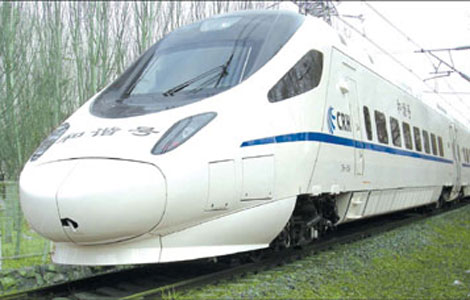Economy
Experts divided on cause of lower local GDP figures
Updated: 2011-04-26 16:58
(Xinhua)
Of the 16 provincial governments that published first-quarter economic data by Tuesday, 14 posted slower growth, a trend first indicated by figures released by the national statistics authorities earlier this month.
China's gross domestic product (GDP) increased by 9.7 percent in the first quarter of 2011, down from last year's first quarter figure of 11.9 percent, the National Bureau of Statistics (NBS) said.
South China's Guangdong Province, which accounted for about 11 percent of the country's GDP in 2010, said last week that its GDP grew 10.5 percent year-on-year for the first three months of 2011, lower than its 12.5 percent increase for the same period last year.
Tightening measures, such as restrictions on car purchases and bans on purchases of second homes, helped to put the brakes on Beijing's GDP growth over the same period, which slowed to 8.6 percent from last year's 14.9 percent.
China's southern Hainan Province, where a booming property sector lifted the tropical island's economy by 25.1 percent in the first quarter of 2010, said its GDP grew by 10 percent in the first three months of this year.
"The slower growth indicates that the Chinese economy is cooling and that the government's tightening measures are starting to create results," said Zhuang Jian, senior economist with the Asian Development Bank.
The comments came at a time when concerns about China's sizzling economy and bubbling inflation, which reached a 32-month high of 5.4 percent in March, were mounting.
China has raised benchmark interest rates four times since last October and boosted the required reserve ratio for the country's largest financial institutions to a record high of 20.5 percent, which means that these banks must keep 20.5 percent of their deposits in reserve.
"Monetary tightening is showing results, and the slowdown trend is in line with the government's macroeconomic regulation goals. Controlling inflation is the government's top priority," said Zhuang.
However, Wang Jun, a senior macroeconomic researcher with the China Center for International Economic Exchanges (CCIEE), said the lower GDP figures for some regions are more symbolic than substantial.
"What I saw is not economic cooling, but actually signs of overheating," said Wang, deputy director of the Research & Consulting Department of the CCIEE, a think tank affiliated with the National Development and Reform Commission, China's top economic planning agency.
Wang said comparing this year's lower GDP figures with numbers from the first quarter of last year is somewhat misleading, as year-on-year growth for 2010 was greatly inflated by a very low comparison base for the first three months of 2009 - a period of time which marked the height of the global financial crisis.
"A more genuine picture can be seen by making a quarter-on-quarter comparison," said Wang, noting that this year's first quarter GDP growth of 9.7 percent is nearly the same as the 9.6 percent and 9.8 percent figures recorded for the third and fourth quarters of last year, respectively.
"The economy is not cooling if you look at it from a broader perspective. What I saw is a rebound in new bank loans in March and surging fixed asset investments, along with rising home prices," Wang said.
The central bank said earlier this month that Chinese banks extended 679.4 billion yuan ($104.2 billion) in new loans in March, well above the market's expectations and February's loan amount of 535.6 billion yuan.
"Given the already large amount of liquidity in the market, which was partially a result of attempts to to shore up growth during the global downturn, even a slight increase means an injection of a great amount of cash into the market," said Wang.
Growing fixed asset investments also show no signs of abating. Urban fixed asset investments rose 25 percent to reach 3.95 trillion yuan, accounting for 44.1 percent of the first quarter GDP, according to the NBS.
|
||||
Wang said that in spite of its slew of new tightening measures, the government is still being careful to make sure that its regulations are "not too tight" so that employment won't be threatened.
"The government is trying to strike a delicate balance, which is proved by the fact that authorities have so far preferred to use quantitative tools, such as bill sales and required reserve ratios, instead of pricing tools, such as interest rates and exchange rates," Wang said.
Wang said more tightening measures are in the pipeline. These will be rolled out in a balanced manner to reflect the relationship between the pace of economic growth, employment and inflation, he said.
E-paper

Blowing in the wind
High-Flyers from around the world recently traveled to home of the kite for a very special event.
Image maker
Changing fortunes
Two motherlands
Specials

Models gear up car sales
Beauty helps steer buyers as market accelerates.

Urban breathing space
City park at heart of Changchun positions itself as top tourism attraction

On a roll
Auto hub Changchun also sets its sight on taking lead in railway sector


